November is National Native American Heritage Month in the United States, a time to honor the history, heritage, and culture of Native American, Alaskan Native, and Native Hawaiian communities. This month provides an opportunity to recognize and celebrate the many contributions and achievements of Indigenous peoples. At Davidson College, our galleries join this celebration by highlighting works from our permanent collection by Native American, Indigenous, Alaskan Native, and Native Hawaiian artists. Here are five of my personal favorites that reflect the diverse voices of these artists.
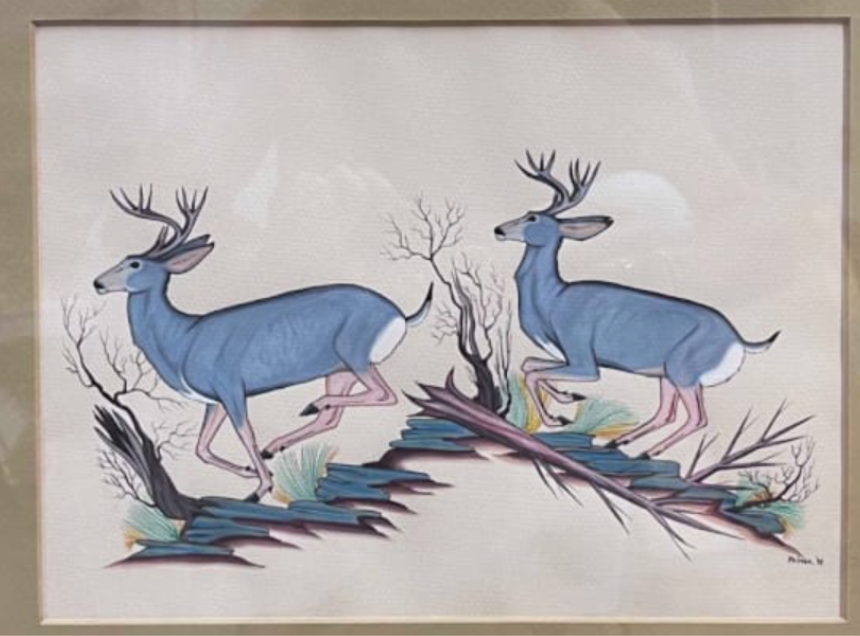
Ignatius Palmer (Native American, Mescalero Apache, 1922-1985)
Deer, 1978
Watercolor on paper
8.5 x 11.5 in (21.59 x 29.21 cm)
Gift of Carol Quillen, 18th President of Davidson College, and George McLendon
I was first captivated by this painting because its main subject matter is deer. The artwork depicts two graceful bucks prancing through a forest that appears somewhat distressed. The cool-toned watercolors create a calming effect that emanates from the animals and resonates with me as the viewer. Artist Ignatius Palmer (Mescalero Apache, 1922-1985) began painting in the 1940s after returning from his service in the U.S. Army Air Corps. He later worked as both an artist and a construction worker, showcasing his works at local community centers and schools.
Nicholas Galanin (Tlingit/Unangax̂, b. 1979)
Dreaming in English (like our ancestors moved), 2021
Monotype and gold leaf on paper
30 x 20 in (76.2 x 50.8 cm)
Gallery Purchase from the Dr. Joan Huntley Art Acquisition Fund
I love Dreaming in English by Nicholas Galanin because, at first glance, it seems like a series of random smears. However, on closer examination, these smears transform into figure-like forms. The 16 spots of red paint suggest an image of people dancing. Galanin (Tlingit/Unangax̂, b. 1979) brings a unique perspective to his work. He holds a BFA in Jewelry Design from London Guildhall University and an MFA in Indigenous Visual Arts from Massey University in New Zealand. Additionally, his apprenticeship with master carvers and jewelers in his community of Sitka, Alaska, deeply influences his art.
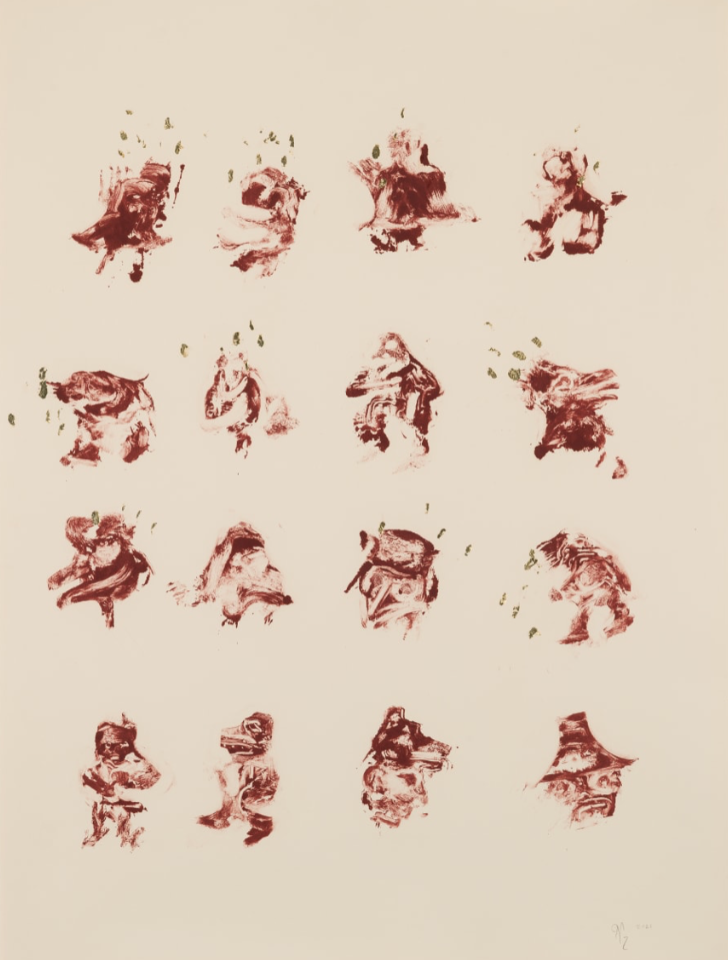
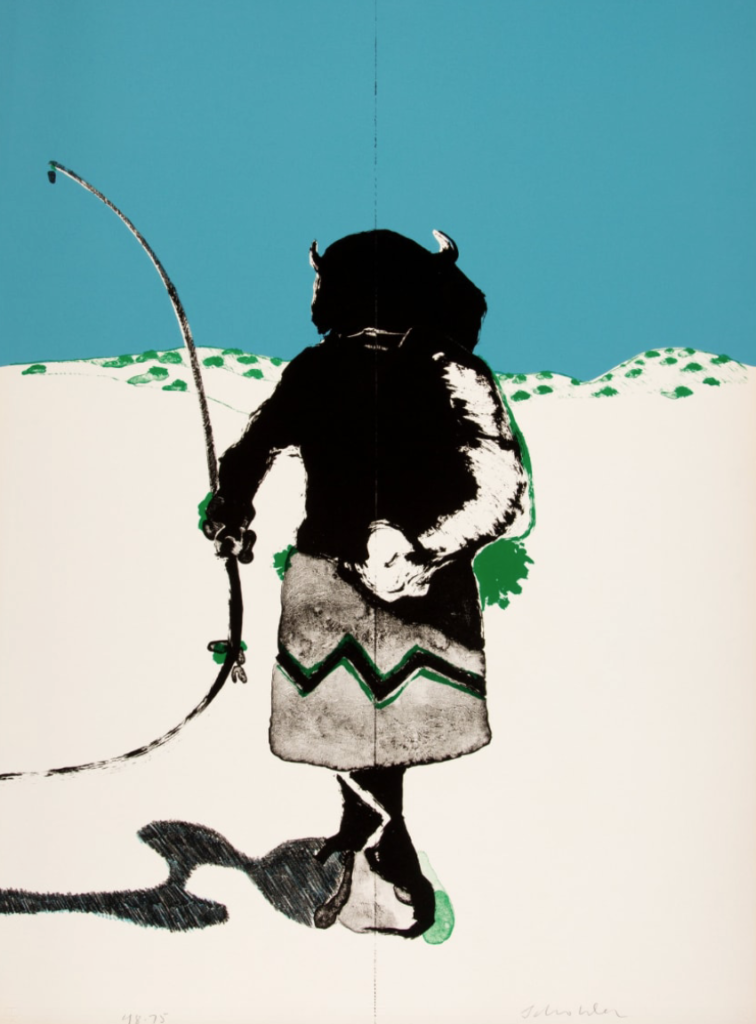
Fritz Scholder (Native American, Payómkawichum, Luiseñ, 1937-2005)
Buffalo Dancer: New Mexico (State I), 1975
Screenprint in colors on wove paper
30 x 22 in (76.2 x 55.88 cm)
Gift of Carol Quillen, 18th President of Davidson College, and George McLendon
In the screenprint Buffalo Dancer: New Mexico (State 1), Fritz Scholder uses minimal colors to convey so much depth and emotion. The stark contrast between the figure and what looks like a snowy ground under a blue sky is captivating, pulling me in as a viewer and sparking a curiosity to learn more about the story behind the piece. Scholder (Payómkawichum, Luiseño, 1937-2005) was known for his striking use of color in sculptures, prints, and photographs. His work challenges stereotypical representations of Native Americans while exploring contemporary questions of cultural identity and representation.
Kay WalkingStick (American, b. 1935)
Positive Field, 1982
Acrylic on canvas
56 x 56 x 4 in (142.24 x 142.24 x 10.16 cm)
Gift of the Artist
I was initially drawn to this painting by Kay WalkingStick because of its sheer size. Seeing it in person, you’re physically confronted with the ideas she’s conveying, which provoke deeper thought. The deep red canvas, marked by scratch-like lines and a central cross image, is paired with scar-like shapes that mirror each other, prompting me to reflect on my own life, shaped by its own scars and scratches. Kay WalkingStick (American, b.1935), one of the most celebrated Native American artists and member of the Cherokee Nation, rose to prominence in the 1960s. She experiments with color and form and, by the 1970s, began exploring themes of abstraction and cultural heritage.
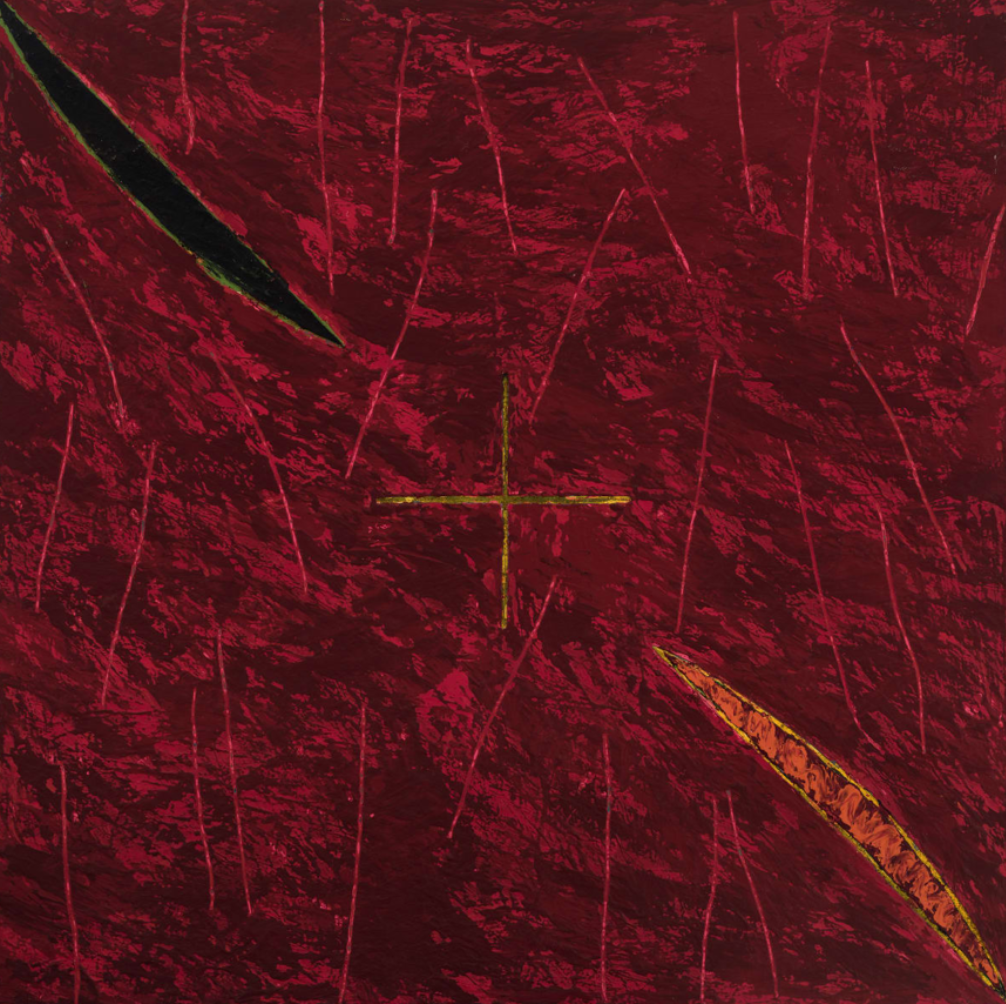
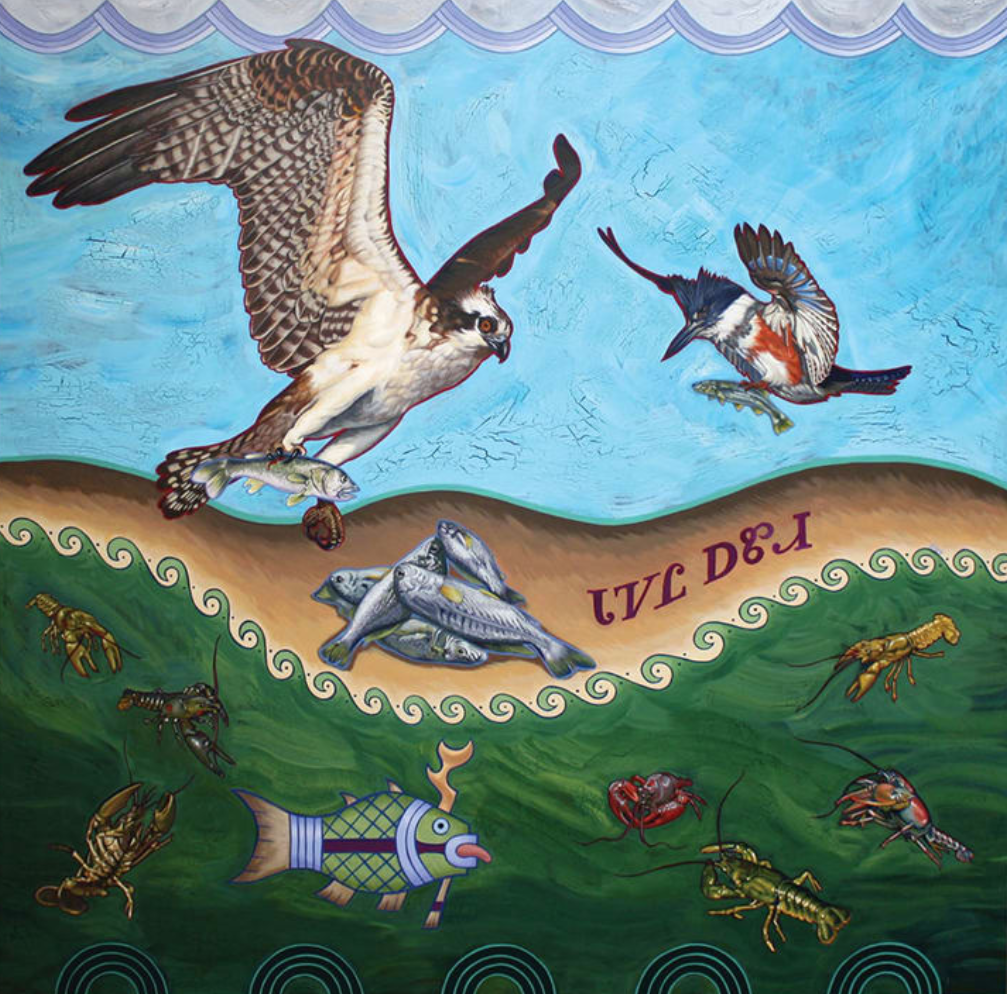
America Meredith (Swedish-Cherokee, b. 1972)
ᏓᏤᏝ ᎠᏑᏗ (Datsetla Asudi), 2011
Acrylic on hardboard
37.75 x 37.75 in (95.89 x 95.89 cm)
Purchased with funds from the Native Foodways Jusice, Equality, and Community Grant
This painting really spoke to me as I immediately recognized the Kingfisher and Hawk. In the image, the birds are fishing in an emerald green river teeming with a diverse array of creatures. The bright, clear colors first drew me in, but it was the way the painting encapsulates the circle of life that truly made me engage with it. America Meredith (Swedish-Cherokee, b. 1972) is a painter, curator, art critic, and editor who brings a unique perspective to her work, blending cultural storytelling with vibrant imagery.
– Izzy Hernandez ’25
